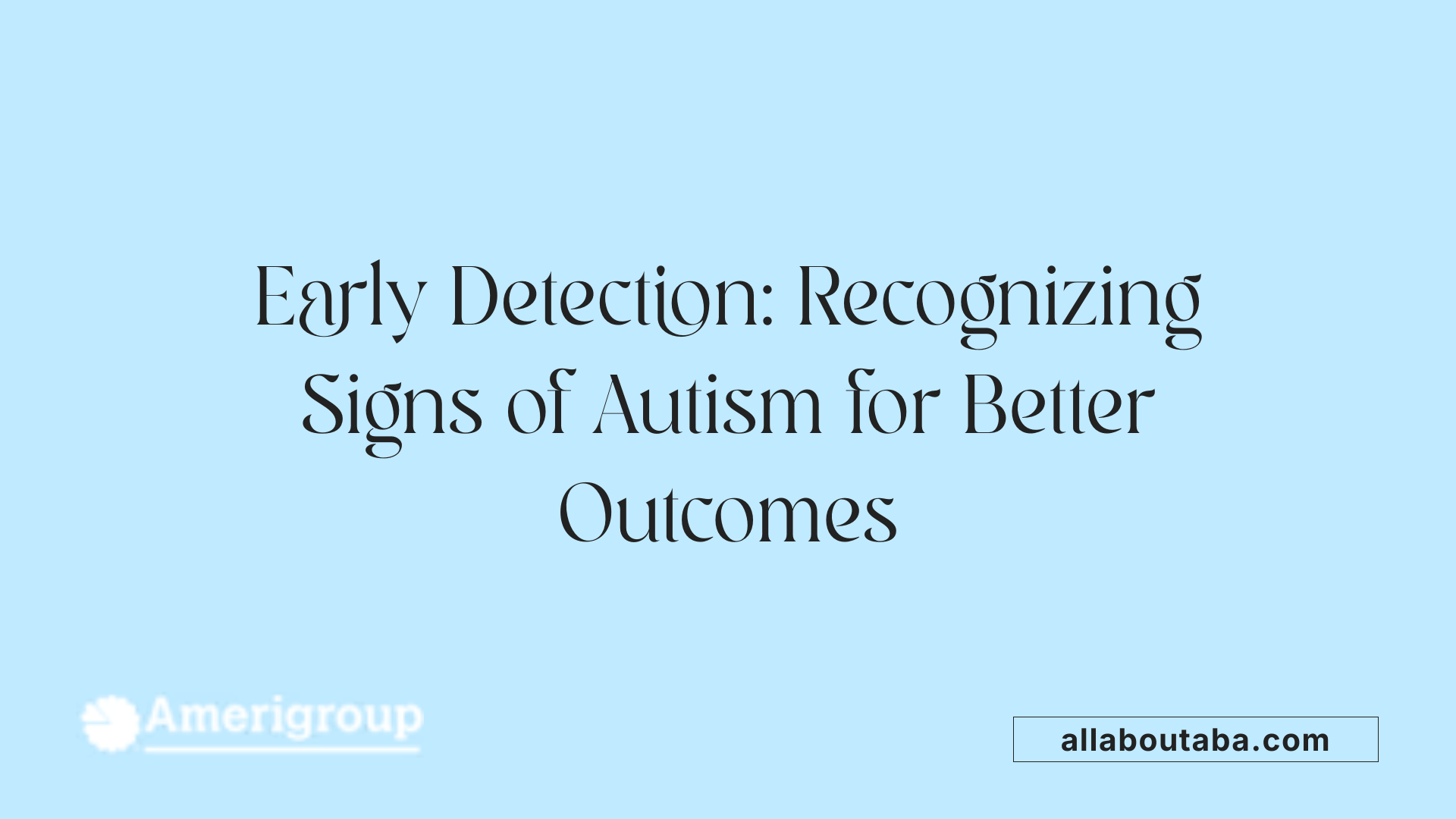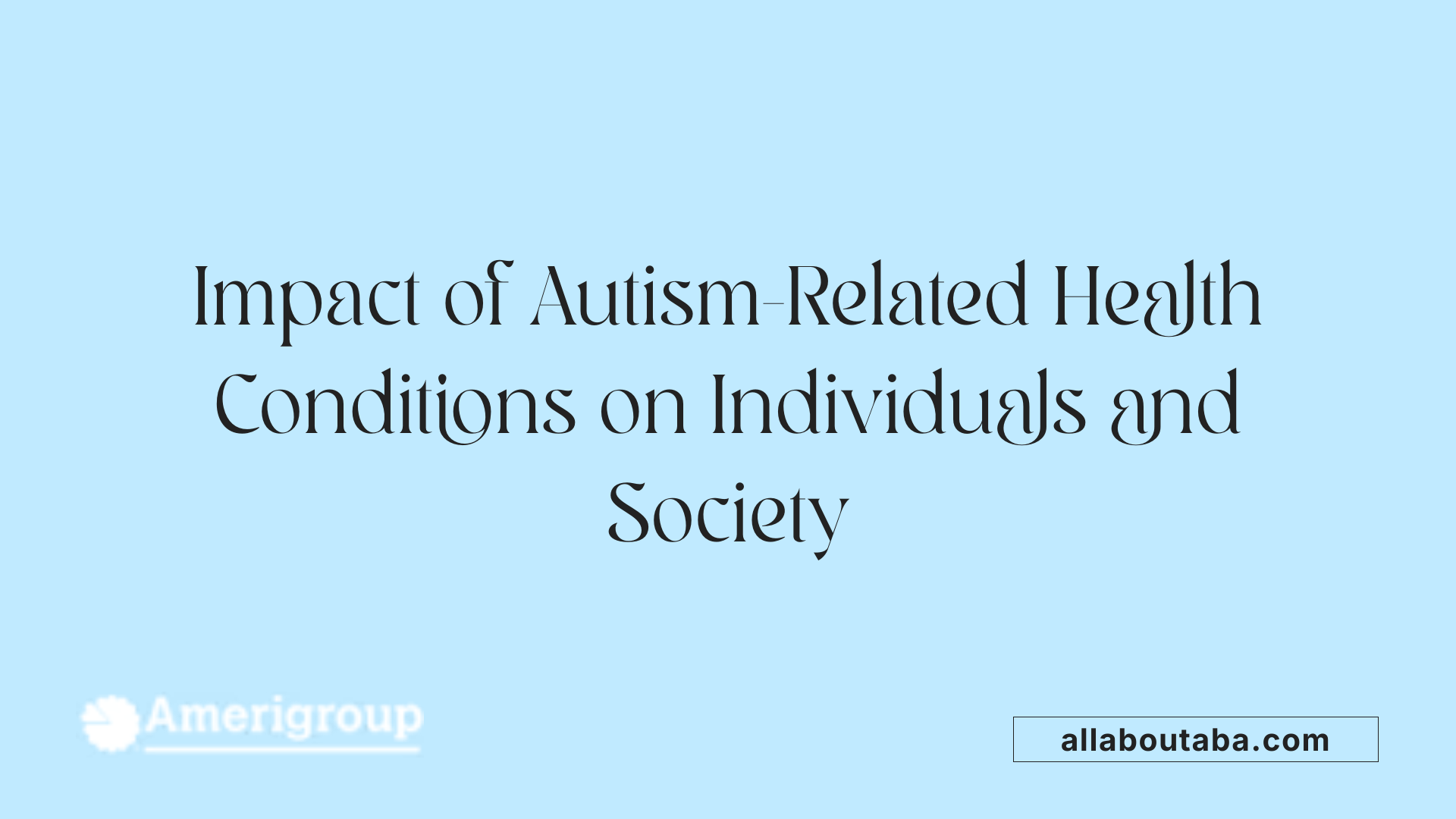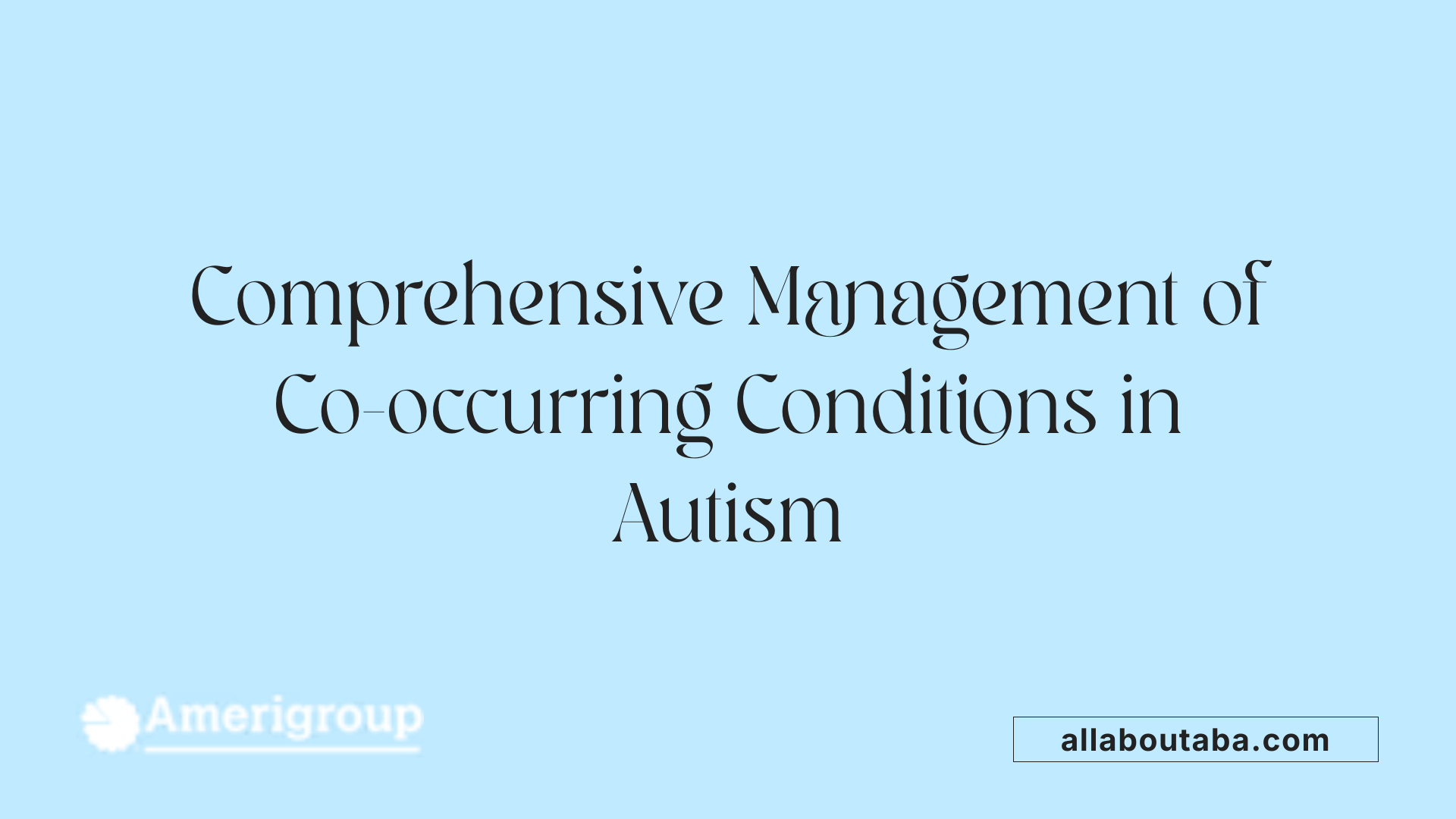Autism And Chronic Health Conditions: What To Know
A Comprehensive Overview of Autism and Its Associated Health Challenges
Autism spectrum disorder (ASD) is not only characterized by unique social, behavioral, and communication patterns but is also linked to a significantly higher prevalence of chronic health conditions across almost all organ systems. This article explores the multifaceted health issues faced by autistic individuals, emphasizing the importance of ongoing medical care, early detection, and tailored management strategies to improve quality of life.
The Scope of Physical Health Conditions in Autism
What is the relationship between autism and chronic health conditions?
Research shows that autistic individuals frequently experience higher rates of chronic physical health conditions that span nearly all major organ systems. These include neurological, gastrointestinal, endocrine, skin, and immune-related disorders. Many autistic people suffer from multiple conditions simultaneously, a state known as multimorbidity, which adds complexity to diagnosis and management.
Conditions such as coeliac disease, Ehlers-Danlos Syndrome (EDS), endometriosis, and gastrointestinal disorders like chronic constipation, reflux, and bowel inflammation are notably common among autistic populations. Chronic fatigue syndrome (ME/CFS), vertigo, syncope, and skin issues like eczema also occur at higher rates.
This pattern highlights the need for healthcare providers to adopt comprehensive and individualized approaches when caring for autistic patients, addressing the broad spectrum of potential health issues.
How prevalent are health issues linked to autism, and what are their clinical implications?
Studies indicate that health problems are widespread in autistic individuals. For example, about 42% of autistic children experience infections, while 25% face obesity. Neurological issues such as epilepsy affect around 12.1% of autistic adults on Medicaid, with signs including seizures, staring spells, and confusion.
Moreover, mental health comorbidities — such as anxiety (affecting 17.1% of children and 26% of adults), depression, OCD, bipolar disorder, and schizophrenia — are common and often overlap with physical health challenges.
The clinical implications are significant. These health issues often lead to increased healthcare utilization, developmental setbacks, and a reduction in quality of life. Early detection and intervention are vital for managing symptoms effectively, minimizing long-term consequences, and improving overall outcomes.
Why is ongoing medical care important for individuals with autism and chronic health conditions?
Consistent and proactive healthcare management is essential to identify and treat health issues early. Regular medical follow-ups enable healthcare providers to monitor for conditions like sleep disturbances, gastrointestinal problems, and neurological issues such as epilepsy.
Personalized therapies, medications, and behavioral interventions can be tailored to meet the individual needs of autistic people, preventing complications and supporting development.
Furthermore, ongoing care facilitates smoother transitions into adulthood, ensuring sustained health support that fosters independence and enhances overall well-being. Recognizing the complexity and diversity of health conditions in autism underscores the importance of holistic, continuous, and coordinated healthcare strategies.
Early Signs and Warning Indicators of Autism

What early health issues or warning signs are associated with autism?
Autism Spectrum Disorder (ASD) often reveals itself through various early developmental signs noticeable within the first year of life. Parents and caregivers might observe limited social gestures such as reduced eye contact, minimal smiling, or a lack of sharing attention by around 6 to 12 months.
Language delays or regressions are significant warning signs. For instance, a child might not babble or develop a few words by 16 months, or they may lose previously acquired language skills. These changes signal developmental concerns and warrant further evaluation.
Sensory responses also often differ in autistic children. They may demonstrate unusual reactions to sights, sounds, textures, or tastes, like sensitivity to loud noises or aversion to certain textures. Resistance to routines and resistance to change, along with repetitive behaviors such as hand-flapping, rocking, or spinning objects, are common indicators.
Another notable sign is difficulty with joint attention—the ability to coordinate attention with others on an object or event. For example, a child may not point to or show objects to share experience, which is essential for social and language development.
Recognizing these early signs is crucial because early intervention can significantly improve developmental outcomes. Screening tools and close observation by health professionals can identify at-risk children, enabling targeted support and therapies that promote better communication, social skills, and overall functioning.
Why is early screening important?
Early screening for autism involves assessing developmental markers during well-child visits, especially if risk factors are present, such as delayed milestones, sibling with autism, or early health issues.
Screening instruments like the Modified Checklist for Autism in Toddlers (M-CHAT) are used routinely from 16–30 months to flag children who may need a comprehensive evaluation.
By diagnosing autism early, caregivers and professionals can start tailored interventions sooner. These interventions can include behavioral therapies aimed at developing language, social interaction, and behavior regulation.
Early detection and intervention not only improve language and social skills but can also reduce the severity of some associated challenges, such as sensory sensitivities or repetitive behaviors.
Understanding and recognizing early signs of autism is a vital step in supporting children to reach their full potential.
| Signs and Symptoms | Developmental Milestones | Importance of Early Action |
|---|---|---|
| Limited eye contact | No consistent social smiling by 6 months | Early intervention improves outcomes |
| Lack of sharing attention | No pointing or showing objects by 12 months | Screening tools aid early detection |
| Language delays | Few or no words by 16 months | Supports social and communication skills |
| Unusual sensory responses | Over or under-responsiveness to stimuli | Diagnosing early enables tailored therapies |
| Resistance to routines | Difficulty adapting to changes | Reduces potential for behavioral issues |
| Repetitive behaviors | Hand-flapping, rocking, spinning | Early support can lessen severity of behaviors |
This understanding emphasizes the importance of vigilant observation during early childhood, especially when developmental delays or atypical responses are noticed. Timely screening and professional assessments play a fundamental role in connecting children with the services they need to thrive.
Common Comorbidities: Psychiatric, Neurological, and Physical

What are common comorbidities associated with autism, such as ADHD, sleep issues, and mental health disorders?
Autism often presents alongside a variety of other health conditions that impact physical, mental, and neurological well-being. About 28% of autistic individuals experience Attention Deficit Hyperactivity Disorder (ADHD), which is characterized by difficulties with attention, hyperactivity, and impulsivity. These overlapping traits can sometimes make diagnosis and management more complex.
Sleep disturbances are highly prevalent, affecting anywhere from 70% to 90% of autistic people. Common issues include trouble falling asleep, frequent night awakenings, and early waking, which can exacerbate behavioral challenges and reduce overall quality of life. These sleep problems are often managed through tailored behavioral routines or medical interventions.
Additionally, mental health disorders are common among the autistic community. Anxiety affects approximately 20% of autistic individuals, frequently manifesting as social anxiety or general unease. Depression can occur in about 26%, with symptoms like loss of interest, feelings of hopelessness, and changes in hygiene and energy. Obsessive-Compulsive Disorder (OCD) is also more common and may be confused with repetitive behaviors characteristic of autism.
From a neurological perspective, epilepsy affects nearly 35% of autistic individuals. Seizures can vary in presentation, including staring spells, involuntary movements, and altered awareness, often requiring specialized neurological treatment.
Gastrointestinal issues and systemic conditions further add to the health burden. Problems such as constipation, reflux, and food sensitivities are widespread and can compound behavioral and developmental challenges.
How do these comorbidities impact the health management of autistic individuals?
The coexistence of multiple health conditions complicates overall healthcare management. Treating one issue often requires coordination across different specialties. For example, managing epilepsy involves ongoing neurological assessment, medication, and emergency planning.
Sleep disturbances may need behavioral strategies, sleep hygiene education, or medication to improve rest and daily functioning. Mental health disorders like anxiety and depression benefit from therapy, support groups, and sometimes medication, all tailored to the individual's needs.
Proactively addressing these comorbidities is crucial for enhancing quality of life. Early diagnosis and ongoing management can prevent secondary problems, reduce stress, and foster greater independence. Multidisciplinary care teams—including neurologists, psychiatrists, therapists, and primary care providers—are essential in delivering comprehensive support tailored to each person.
Recognizing the broad spectrum of health issues associated with autism underscores the importance of personalized, holistic healthcare approaches. These strategies help reduce the physical and emotional burden on autistic individuals and promote better long-term health outcomes.
The Clinical and Societal Impact of Autism-Related Health Conditions

How prevalent are health issues linked to autism, and what are their clinical implications?
Autistic individuals are more commonly affected by a variety of physical health conditions across nearly all organ systems. Research involving over two thousand participants highlighted that conditions such as gastrointestinal disorders, epilepsy, connective tissue disorders like Ehlers-Danlos Syndrome, and systemic issues like autoimmune diseases are significantly more prevalent than in non-autistic populations. For example, approximately 21% of autistic children suffer from gastrointestinal problems like constipation and reflux, while up to 35% may experience epilepsy. Additionally, there are elevated rates of co-occurring conditions such as anxiety (26% in adults), depression (20.2% in adults), and sensory processing issues, often linked to central sensitisation. These health challenges contribute to frequent hospital admissions, delays in diagnosis due to overlapping symptoms, and increased utilization of healthcare resources. The wide array of physical comorbidities complicates treatment plans and underscores the importance of incorporating comprehensive health assessments into standard autism care. Recognizing and managing these conditions effectively is crucial to improve overall health outcomes and reduce the burden on healthcare systems.
Why is ongoing medical care important for individuals with autism and chronic health conditions?
Autistic individuals with multiple health issues require continuous, coordinated medical attention to identify and treat emerging or existing conditions promptly. Regular health monitoring allows early intervention, which can prevent the progression of illnesses such as epilepsy, gastrointestinal problems, and connective tissue Disorders. Ongoing care also supports mental health, addressing comorbidities like anxiety and depression, which can fluctuate over time and impact quality of life. It facilitates transitions into adulthood by ensuring that health management strategies remain effective and adapted to changing needs. Furthermore, consistent healthcare engagement encourages a multidisciplinary approach, involving primary care providers, specialists, educators, and caregivers. This holistic view is essential because many physical health issues are intertwined with behavioral and developmental challenges. By emphasizing continuous oversight, healthcare systems can better prevent complications, reduce hospitalization rates, and support autistic individuals in achieving greater independence and participation across social, educational, and occupational spheres.
Genetic and Biological Underpinnings of Health Risks in Autism
What scientific insights have been discovered regarding autism and associated health risks?
Recent research sheds light on how autism is connected to a variety of health risks through complex biological and genetic pathways. Scientists have identified specific genetic mutations and variations that increase the likelihood of autism, especially those involved in brain development, neuroinflammation, and immune function. These genetic factors often influence how the nervous system processes sensory input and handles inflammation.
Additionally, immune dysregulation appears to be a significant contributor to the health challenges faced by autistic individuals. Many studies report abnormal immune responses, autoimmunity, and persistent chronic infections, which can trigger or worsen symptoms across multiple organ systems. This immune imbalance is associated with gastrointestinal issues such as leaky gut and inflammation, as well as neurological symptoms like headaches, sensory overload, and developmental regressions.
A critical aspect of this biological interplay involves the gut-brain axis — a communication network linking the digestive system with the central nervous system. Dysbiosis, or imbalance in gut microbiota, along with increased intestinal permeability (leaky gut), can lead to systemic inflammation and neuroinflammation. These conditions are believed to contribute to many physical and behavioral symptoms in autism.
Emerging evidence suggests that neuroinflammation, immune dysregulation, and gut health are interconnected, forming a feedback loop that exacerbates health risks and comorbidities. Understanding these interactions offers promising avenues for therapeutic interventions, aiming for personalized, biologically-informed treatments that address the root causes rather than just symptoms.
| Biological Factor | Impact on Autism | Associated Conditions | Additional Details |
|---|---|---|---|
| Genetic mutations | Predispose to neurodevelopmental anomalies | Language delays, neuroinflammation | Genes involved in synaptic function, immune regulation |
| Immune system dysregulation | Increased risk of autoimmunity and infections | GI issues, neurological symptoms | Chronic inflammation, autoantibodies |
| Gut health (microbiome) | Influences neural development and behavior | Leaky gut, SIBO, inflammatory bowel disease | Dysbiosis alters neurochemical production and immune responses |
| Neuroinflammation | Contributes to cognitive and sensory challenges | Headaches, sensory overload, developmental delay | Microglial activation in the brain |
This evolving understanding emphasizes that autism is not solely a neurodevelopmental disorder but also involves systemic biological processes. Recognizing the interplay between genetic, immune, and gastrointestinal factors can pave the way for holistic approaches to health management, aiming to improve overall well-being and reduce co-occurring health risks.
Management and Support Strategies for Co-occurring Conditions

What management strategies and support options are available for health conditions co-occurring with autism?
Managing the various physical and mental health conditions that often accompany autism requires a comprehensive, multidisciplinary approach. Since autistic individuals may face challenges across multiple organ systems—such as gastrointestinal, neurological, endocrine, and connective tissue disorders—care strategies must be tailored to each person's unique profile.
A primary element of effective management involves behavioral therapies. Applied Behavior Analysis (ABA) remains a cornerstone in enhancing communication, social skills, and reducing problematic behaviors. Speech and occupational therapies also play crucial roles in building daily living skills and addressing sensory sensitivities.
Medical interventions are tailored to specific conditions. For example, medication can help manage anxiety, depression, ADHD, epilepsy, and gastrointestinal issues. Regular health assessments are essential to monitor conditions like coeliac disease, Ehlers-Danlos Syndrome, and autonomic nervous system dysfunctions, ensuring timely adjustments to treatment plans.
Collaboration among healthcare professionals—including physicians, psychologists, therapists, and educators—is vital in crafting holistic, individualized care plans. This teamwork helps address the broad spectrum of physical and mental health concerns, aiming to improve quality of life and functional independence.
Early diagnosis and intervention significantly influence outcomes. Routine screening for comorbid conditions, ongoing assessments, and proactive management strategies prevent complications and support developmental progress.
Complementing clinical care are community and educational supports. Special education programs, social skills training, and community-based activities foster social integration and offer ongoing support.
Furthermore, caregiver education and advocacy empower families to navigate health systems effectively, advocate for their loved ones, and access necessary resources.
In summary, comprehensive, coordinated efforts—combining behavioral, medical, educational, and community-based strategies—are essential to address the complex health needs of autistic individuals and enable them to achieve their full potential.
| Treatment Approach | Typical Interventions | Goals | Additional Details |
|---|---|---|---|
| Behavioral Therapies | ABA, speech, occupational therapy | Improve communication and social skills | Early intervention enhances outcomes |
| Medical Management | Medications, regular health monitoring | Address specific health conditions | Includes management of epilepsy, GI issues |
| Educational Supports | Special education, social skills training | Promote learning and socialization | Custom individual education plans |
| Community Supports | Support groups, life skills coaching | Enhance community involvement | Long-term social and functional independence |
| Caregiver Support | Education, advocacy | Empower families | Critical for ongoing management |
This integrated approach underscores the importance of early, ongoing, and flexible strategies to support the complex health and developmental needs of autistic individuals with co-occurring conditions.
The Role of Central Sensitivity Syndromes in Autism
What is the connection between conditions like central sensitivity syndromes (CSS) and autism?
Autistic individuals often experience a higher prevalence of conditions categorized as central sensitivity syndromes (CSS). These include fibromyalgia, migraines, chronic fatigue syndrome (ME/CFS), temporomandibular joint disorder (TMJ), tinnitus, and irritable bowel syndrome (IBS). Studies show that many autistic adults score at or above the clinical threshold for CSS on specialized inventories like the Central Sensitization Inventory (CSI).
A core component of autism involves sensory hypersensitivity, which manifests as heightened reactions to stimuli such as sounds, lights, textures, or other sensations. This sensory overload overlaps significantly with symptoms observed in CSS. For example, many autistic people report chronic pain, fatigue, and hypersensitivity to stimuli, paralleling CSS features.
Research indicates that the relationship between autism and CSS is mediated by factors like sensory sensitivity and anxiety. In fact, studies show that sensory hyperreactivity and heightened anxiety levels fully mediate the association between autistic traits and CSS symptoms. This suggests that the underlying process of central sensitization—where the nervous system becomes hyper-responsive—may be a fundamental factor connecting these conditions.
Understanding this link opens new pathways for targeted treatment strategies. Healthcare providers who recognize the role of central sensitization can develop interventions that address both sensory sensitivities and broader systemic health issues in autistic individuals.
Addressing CSS in autism isn't just about managing pain or sensory sensitivities but also involves a holistic approach that considers the interconnected nature of neural and systemic health. By focusing on central sensitization, clinicians can improve the overall quality of life for autistic individuals, reducing the burden of chronic health conditions.
More Information
For further detailed exploration, research articles and reviews can be searched using terms like ‘Central sensitivity syndromes and autism,’ ‘sensory hypersensitivity in autism,’ and ‘chronic pain in autistic people.’ This ongoing research continues to refine our understanding of how these complex conditions intersect, ultimately guiding more effective, personalized healthcare approaches.
A Holistic Approach to Autism and Health
Addressing the complex health profile of autistic individuals necessitates a comprehensive, multidisciplinary approach focused on early detection, personalized interventions, and lifelong management. Raising awareness about the high prevalence of physical and mental health conditions, understanding their biological underpinnings, and ensuring equitable access to healthcare services are essential steps toward improving health outcomes and quality of life for those on the autism spectrum. Collaboration across healthcare, education, and community sectors can foster more effective support systems and equitable health provisions, ultimately empowering autistic individuals to lead healthier, more fulfilling lives.
References
- Autistic individuals have increased risk of chronic physical ...
- Medical conditions associated with autism
- Autism and Health: Chronic Illness, Fatigue, and ...
- Autism and chronic ill health: an observational study of ...
- Increased rates of chronic physical health conditions across ...
- Other conditions that affect autistic people
- 7 Disorders Closely Related to Autism
- 5 Chronic Health Issues Associated with Autism and ADHD
- Chronic Health Conditions in ASD
- Autism
Other articles
Recent articles

The Role Of Teachers In Fostering Autism Peer Acceptance

Using Art Therapy To Support Children With Autism

Autism And Strategies For Addressing Sensory Defensiveness

Autism And The Benefits Of Structured Leisure Activities

How To Support Autistic Students During Exam Season

Autism And Goal Setting For Personal Growth

How To Use Gamification In Autism Learning Programs

How Schools Can Reduce Bullying Of Autistic Students

Early Intervention Strategies For Autism Spectrum Disorder

The Role Of Therapists In Autism Life Skills Coaching

How To Support Autistic Individuals In Crisis Situations

Autism And Self-Care Routines For Stress Management

Understanding Echolalia And Its Role In Autism Communication

Autism And Fine Arts Education Benefits

The Impact Of Multisensory Learning On Autism Education

How Family Counseling Supports Autism Household Dynamics

Best Practices For Inclusive Playgrounds For Autism

Best Practices For Autism-Friendly Shopping Centers

How Autism Affects Fine Motor Skill Development

Best Ways To Introduce Sensory Activities Into Daily Routines

How Sports Teams Can Be Inclusive Of Autistic Players

Autism And Strategies For Building Workplace Resilience

Autism And The Impact Of Hormonal Changes During Puberty

How To Support Autistic Students In Foreign Language Classes

Best Ways To Teach Money Skills To Teens With Autism

Supporting Siblings Of Children With Autism

Autism And Co-Occurring Gastrointestinal Disorders

The Role Of Art Projects In Autism Sensory Integration

How Schools Can Incorporate Sensory Break Spaces

Best Practices For Autism Sensory Regulation At School

Autism And Strategies For Teaching Organizational Skills

Understanding The Relationship Between Autism And Anxiety Disorders

Autism And Life Planning For Long-Term Care

Exploring Visual Supports In Autism Education

Ways To Encourage Social Interaction In Children With Autism

The Connection Between Autism And Dyscalculia

The Role Of Occupational Therapy In Transition Planning For Autism

The Role Of Physical Therapists In Autism Motor Skills Support

How To Teach Decision-Making Skills To Autistic Young Adults

The Connection Between Autism And Epilepsy

Best Practices For Transitioning Autistic Children Into New Schools

Autism And Time Management Challenges In Adulthood

The Role Of Visual Arts In Autism Communication Development

How To Address Tactile Defensiveness In Autism

Best Practices For Telehealth Autism Therapy

How To Help Autistic Children Develop Friendship Skills

How Schools Can Support Autistic Students In Career Prep

Best Strategies For Autism-Friendly Event Planning

Understanding Noncontingent Reinforcement In Autism Behavior Plans

How Drama Therapy Benefits Autistic Individuals

Best Practices For Autism-Friendly Fitness And Recreation Centers

Best Ways To Promote Healthy Social Media Use For Autistic Teens

How To Help Autistic Children Cope With Public Speaking

Autism And Strategies For Managing Unexpected Changes

Best Podcasts About Autism For Parents And Educators

Autism And The Impact Of Seasonal Changes On Behavior

The Role Of Diet In Managing Co-Occurring Conditions With Autism

Sleep Challenges In Autism And Practical Solutions

Best Ways To Build Daily Routines For Autistic Children

Best Practices For Supporting Autistic Entrepreneurs

Autism And Strategies For Navigating Large Social Gatherings

Adaptive Sports And Recreational Activities For People With Autism

Autism And The Benefits Of Story-Based Learning Activities

Understanding The Role Of Play In Autism Development

Autism And The Impact Of Environmental Noise On Learning

How To Create Autism-Friendly Community Spaces

Autism And Chronic Health Conditions: What To Know

The Role Of Care Managers In Autism Life Planning

How To Teach Social Boundaries To Autistic Children

How Autistic Individuals Experience Empathy Differently

How To Support Autistic Employees In Remote Work Settings

Autism And The Relationship Between Motor Skills And Learning

How To Create Community Resource Guides For Autism Families

How To Teach Daily Living Skills To Autistic Teens

Autism And The Impact Of Mind-Body Practices On Stress Reduction

Autism And The Benefits Of Outdoor Group Activities

How To Create Autism-Friendly Sensory Paths In Schools

Best Practices For Autism-Friendly Park And Recreation Areas

Autism And Strategies For Reducing School Refusal

Supporting Autistic Individuals In Public Speaking

The Role Of Diet In Managing Autism Symptoms

The Benefits Of Gardening Clubs For Autism Social Development

How To Prepare Autistic Children For Dental Visits

Autism And Employment: Career Paths That Work

Best Practices For Autism-Friendly Hotels And Lodging

The Impact Of Screen Time On Autism Development

Autism Screening Tools For Early Childhood

The Role Of Physical Exercise In Autism Therapy

Best Strategies For Supporting Autistic College Students

The Role Of Technology In Autism Early Detection

Sensory-Friendly Classroom Design Ideas For Autistic Students

The Role Of Speech Therapy In Building Social Communication Skills

Best Strategies For Handling Autistic Burnout In Adults

Autism And The Importance Of Predictability In Routine

Autism And Peer Education: Teaching Acceptance In Schools

Best Practices For Sensory-Friendly Libraries And Reading Rooms

Self-Advocacy Skills For Autistic Adults

The Role Of Technology In Autism Peer Communication

Promoting Physical Activity In Children With Autism

How To Prepare Autistic Children For Medical Procedures
We’re All About You, Your Family, and Your Child

